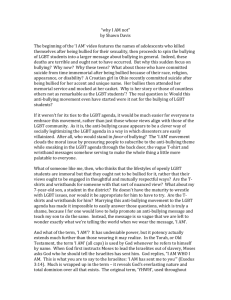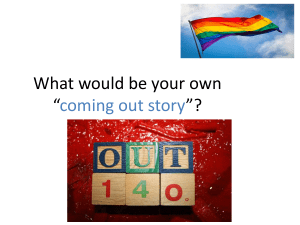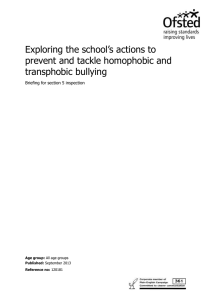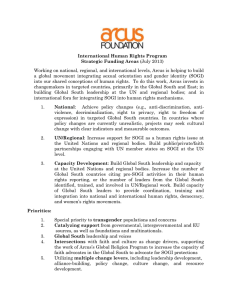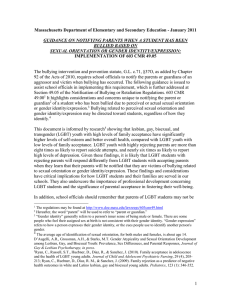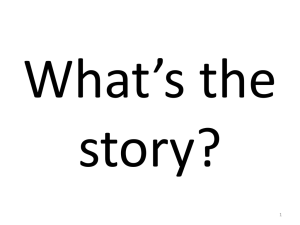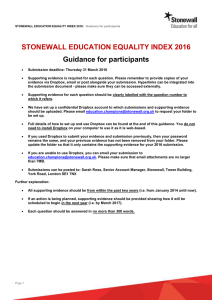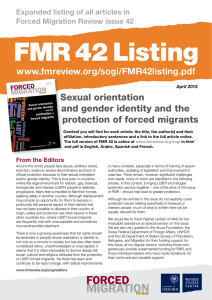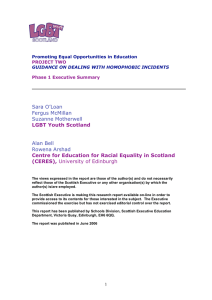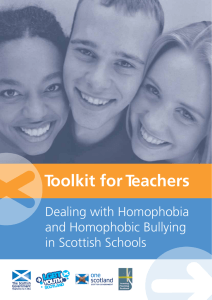introductory paper on the specific aspects of
advertisement
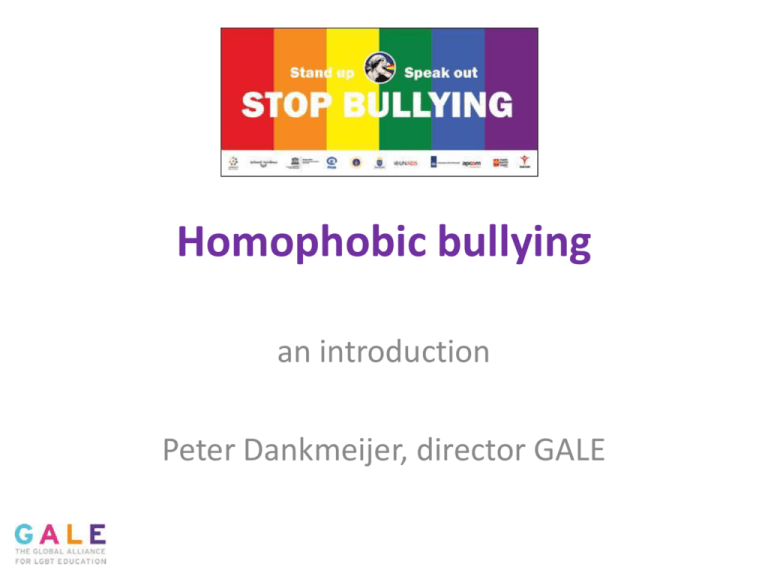
Homophobic bullying an introduction Peter Dankmeijer, director GALE Homophobia? “The irrational fear, rejection or hatred towards those who are or are perceived to be gay, (lesbian, bisexual and / or transgender)” However, most of the bullying towards LGBT people is not “irrational” but a conscious choice with considerable social commitment. Prefer: SOGI* related negative behavior *sexual orientation and gender identity Bullying? “Repeated aggressive behavior by a bully that intentionally inflicts harm to a victim... combined with a perception of imbalance of power.” SOGI negative behavior: • Is often not personalized • Is often not perceived as intentional (name-calling) • Power imbalance is part of heteronormativity Heteronormativity • Preference • Roles Everybody is heterosexual, a different orientation is bad or needs explanation Everybody conforms to their peer group, nonconformist behavior is private • Openness Everybody is a man OR a women and behaves like that Everybody wants an everlasting monogamous relationship, sex is for procreation • Sexuality The social exclusion spiral Norms governing social organization and sexuality Deviations from the norm Stereotyping Violence Discrimination Negative emotions Social distance Negative attitudes Prevalence *UNESCO draft report 2016 1. LGBT almost all report homophobic or transphobic violence in school 2. Always higher rates of bullying and victimization 3. Most prevalent: psychological/emotional, verbal, social exclusion 4. Primary targets: boys who fail to ‘conform’ to masculinity 5. Homophobic and transphobic violence increases during adolescence 6. LGBT students hide sexual orientation/gender identity at school 7. Also affects heterosexuals (perceived to be gay or “different”) Impacts 1. Lower level mental health 2. Increased risks of depression, feelings of anxiety, fear, helplessness, loneliness, self-harm (72%, Europe) 3. Suicide rate 5 times as high as among heterosexual peers 4. Higher rates of smoking, alcohol and drug use (USA: 64%) 5. Lower marks (Europe, 37%) 6. School drop-out (Europe: 13-36%) Impact mechanisms State-sponsored SOGI bullying 1. 2. 3. 4. 5. 6. Censorship laws (so-called anti-gay propaganda) Forbidding LGBT supportive school resources Not allowing LGBT youth support clubs/services Lack of protection of LGBT teachers Allowing stereotyping school resources Refusing to deal with specific LGBT aspects in anti-bullying policies 7. Not setting quality standards (“freedom of education/religion”) Solutions other than generic 1. A broad perspective on bullying/social behavior 2. Take societal norms and processes into account 3. Deal with fear of being different from the norm 4. Integrate social acceptance of SOGI in school policies on social behavior and curriculum 5. International commitment: Paris May 2016

